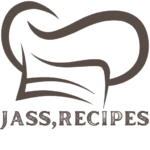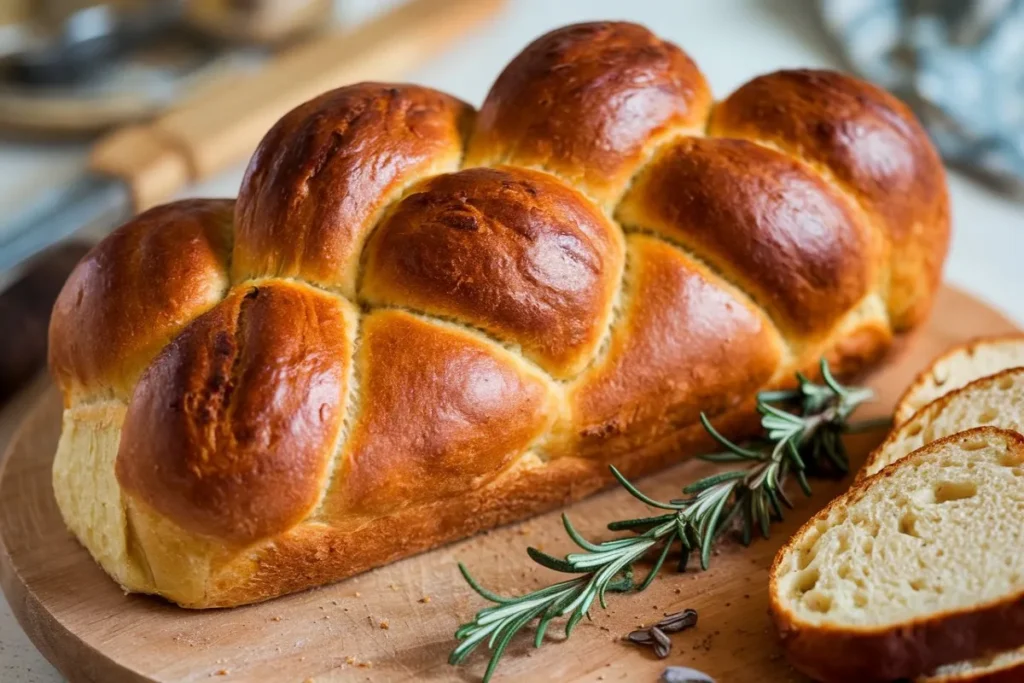Challah bread is a staple in many Jewish households, especially during the holidays. For those who follow a gluten-free diet, finding a recipe that replicates the soft, fluffy texture of traditional challah can be a challenge. With the right combination of ingredients and techniques, you can create a gluten free challah bread recipe that everyone will love.
Why Make Gluten-Free Challah?
A gluten-free diet is essential for individuals with celiac disease or gluten sensitivities. This recipe allows those with dietary restrictions to still enjoy challah, a bread that holds significant cultural and religious importance.
Gluten-free baking can be tricky, but with the right tools and understanding of gluten-free flours, the results can be delicious. Learn more about baking with alternative flours in this gluten-free zucchini bread recipe, which uses similar ingredients for structure and moisture.
Key Ingredients for Gluten-Free Challah
To create a perfectly soft and chewy gluten-free challah, you’ll need some specific ingredients:
- Gluten-Free Flour Blend: A combination of flours such as rice flour, almond flour, or tapioca flour will help provide structure. Xanthan gum or psyllium husk is often needed to mimic gluten’s elasticity.
- Yeast: Make sure you’re using gluten-free yeast to achieve a fluffy rise.
- Eggs or Vegan Substitutes: Traditional challah uses eggs for richness, but you can substitute with flax eggs or aquafaba for a vegan option.
- Olive Oil: Helps keep the bread moist and adds richness.
You can find a similar use of gluten-free ingredients in this gluten and dairy-free dessert recipe, which explores creative alternatives for traditional baking.
Preparing Gluten-Free Challah: Tools and Techniques
When making gluten-free bread, your technique matters just as much as your ingredients. Follow these tips for the best results:
- Use a stand mixer with a dough hook for smooth and even kneading, especially since gluten-free dough can be stickier than regular dough.
- Allow plenty of rise time to get the best texture. A warm, draft-free environment will help the yeast work its magic.
- For the iconic braid, divide your dough into equal parts and carefully form your strands. Although the dough lacks gluten, it can still hold its shape if handled gently.
Step-by-Step Gluten-Free Challah Recipe
Ingredients:
- 4 cups gluten-free flour blend
- 2 teaspoons xanthan gum
- 1 tablespoon gluten-free yeast
- ½ cup warm water
- 2 tablespoons sugar or honey
- 3 large eggs (or flax eggs for a vegan version)
- ¼ cup olive oil
- 1 teaspoon salt
Instructions:
- Activate the Yeast:
- In a small bowl, mix the warm water, sugar, and yeast. Let it sit for 5-10 minutes until frothy.
- Prepare Dry Ingredients:
- Whisk together the gluten-free flour, xanthan gum, and salt in a large bowl.
- Mix Wet Ingredients:
- In a separate bowl, whisk the eggs (or flax eggs), olive oil, and honey until well combined.
- Combine and Knead:
- Add the activated yeast and the wet ingredients to the dry mixture. Using a stand mixer with a dough hook, knead the dough on low speed until smooth and slightly sticky.
- First Rise:
- Cover the dough and let it rise in a warm place for 1-2 hours, or until it doubles in size.
- Shape and Second Rise:
- Divide the dough into strands and braid it. Place the braid on a lined baking sheet, cover, and let it rise for another 30 minutes.
- Bake:
- Preheat the oven to 350°F (180°C). Brush the dough with egg wash (or olive oil for a vegan option) and bake for 30-40 minutes until golden brown.
Tips for a Fluffy Gluten-Free Challah
- Let it rise: Patience is key for achieving a light, airy loaf. Let your dough rise until it doubles in size, and don’t rush the process.
- Use the right flour blend: Not all gluten-free flour blends are created equal. A mix that includes both starches and protein-rich flours will give your challah the best texture.
- Experiment with braiding: The braid may not hold as firmly as in gluten-based doughs, but gentle handling will ensure your bread looks as good as it tastes.
For more bread-making tips, check out this gluten-free pita bread recipe for additional advice on working with gluten-free dough.
Troubleshooting Common Problems
Even with the best techniques, sometimes things go wrong. Here’s how to fix common issues:
- The dough is too sticky: Add more flour gradually until it’s easier to handle, but be careful not to dry it out.
- The bread didn’t rise enough: Ensure that your yeast is fresh and that your dough has had enough time to rise in a warm environment.
- Cracking during baking: This can happen if the dough is too dry or hasn’t had enough time to rise. Make sure the dough is moist and well-proofed before baking.
FAQs About Gluten-Free Challah Bread Recipe
Can you make gluten-free challah without eggs?
Yes! You can use flax eggs or aquafaba as an egg substitute for a vegan version of gluten-free challah.
Why does gluten-free challah require xanthan gum?
Xanthan gum mimics the elasticity of gluten, giving your challah the structure it needs to rise and hold its shape.
How do you store gluten-free challah?
Store your challah in an airtight container at room temperature for up to two days, or freeze it for longer storage.
Conclusion
Baking gluten free challah bread recipe may seem challenging at first, but with the right ingredients, tools, and patience, you can create a delicious loaf that retains all the flavor and texture of the traditional bread. Whether you’re celebrating a holiday or just want to enjoy fresh bread, this recipe ensures a satisfying, soft, and beautiful challah.
For more gluten-free bread options, you might enjoy this gluten-free sourdough bread recipe which offers another take on gluten-free baking with a tangy twist!

